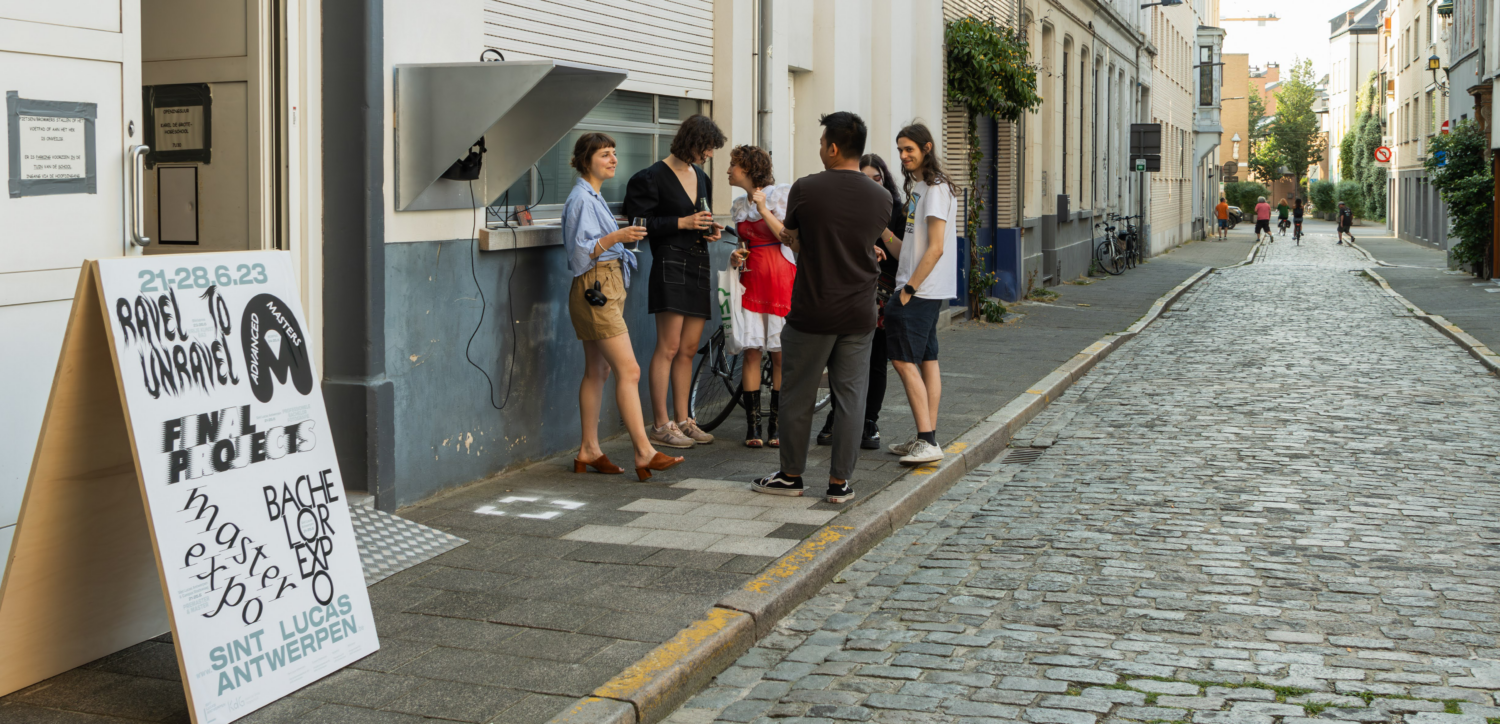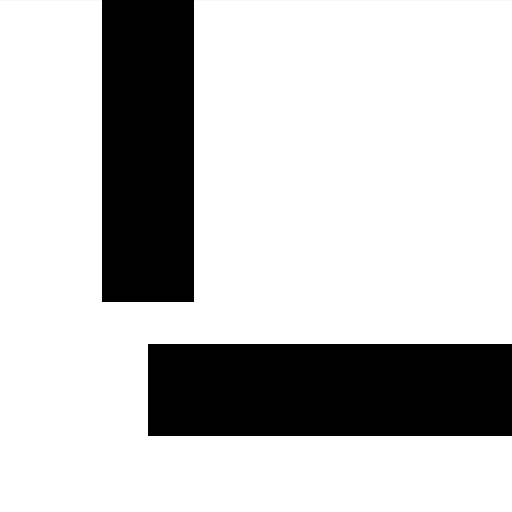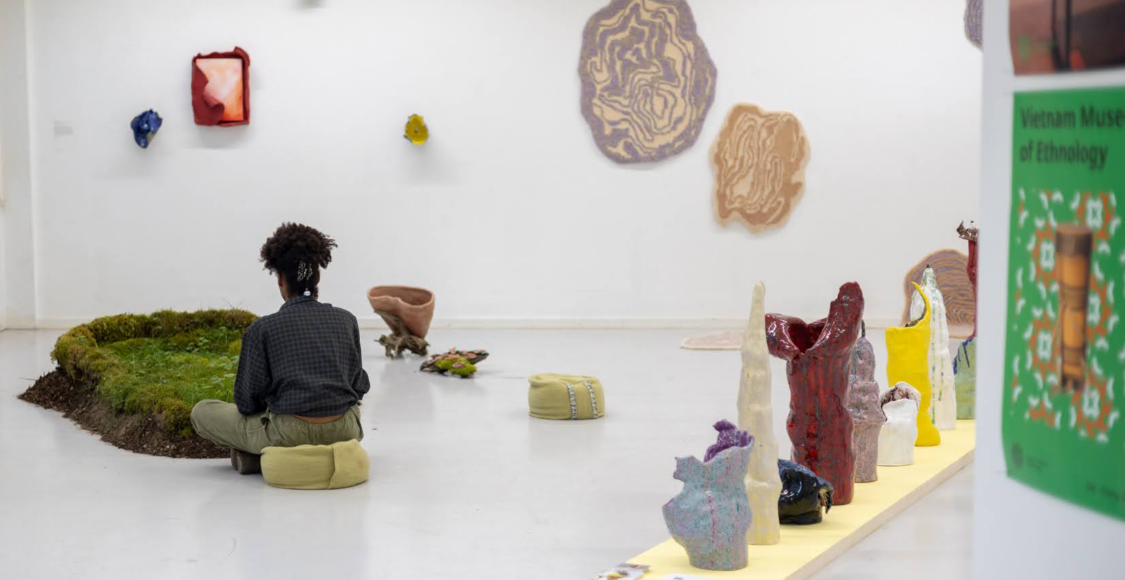
Master of Visual Arts
Don’t consider our master’s program as the last stop of your education. It is the first step of your professional future.
Your education doesn’t determine who you can or should become, it helps you to make that choice yourself. In our unique master’s trajectory you further develop your voice and your work, tailored to your ambitions and in relationship to the way you want to be engaged within the society.
At the start of your master you choose one of five contexts: the applied, autonomous, digital, socio-political or jewelry context. When you register, you indicate which context your interest lies in.
Why our Master’s program got a makeover
Studying art or design is never an end in itself but a means to your own goals. This is why we challenge you within our completely renewed master’s program at Sint Lucas Antwerpen, to formulate relevant answers to these two questions:
What do you want to achieve with the already acquired artistic knowledge, skills and attitudes within your discipline?
In which context do you want to be active with your artistic practice?
Consider our one-year master’s program (60 credits) as your first year as a professional artist or designer and use the full potential of all our master coaches to contextualize your work within a contemporary theoretical and professional framework. Through research, experimentation and network building you will become self-aware of the potential of your own choices and ambitions.
Master program
PART 1 : MASTER PROJECT – 30 credits
PART 2 : THEORY & REFLECTION – 21 credits
PART 3: PROFESSIONAL ATTITUDE – 6 credits
PART 4: MASTERCLASSES – 3 credits
CLASS SCHEDULE AND COURSES
For an example of the class schedule with all subjects: click here. For the theory programme: click here.
PART 1 : MASTER PROJECT – 30 credits
1.A. Choose your context
Half of the year’s credits are focused on the development of your practical work. The master programme at Sint Lucas Antwerpen offers five different contexts to choose from.
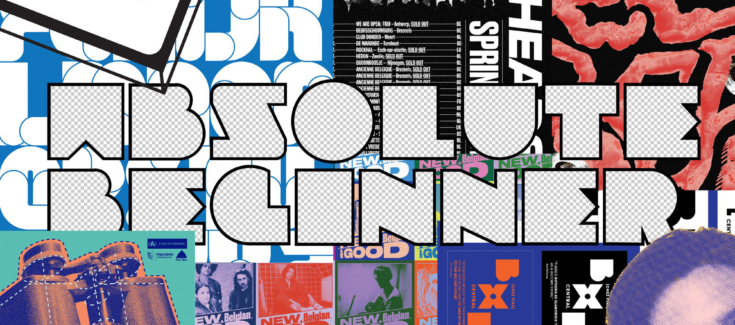
1.1. Applied context
Designing within an applied practice means that as a designer or artist you always design within a given context. That context can be commercial, sensitizing or informative. The reason for your work lies not within but outside yourself. You design in service of an assignment, a client, a message, etc.
You learn to communicate your own style and artistic vision to an audience and to present your research.
Within this context, you will develop your master project in direct relationship with an external company, organization, or professional of your own choosing, with whom you will also spend several months on an internship.
Coaches: Reg Herygers, Jan Baert, Anne Kurris, Hugo Puttaert, Sam Vanbelle, Sander Van de Vijver, Michel Van Beirendonck
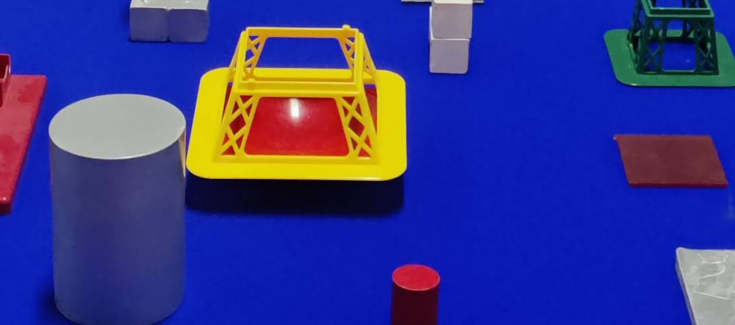
1.2. Autonomous context
Fine arts track
The students’ individual studio work and personal development are the main points of departure during the fine arts trajectory of the MA in an Autonomous Context. Students are encouraged to develop a high level of independent thinking and making, where possible in collaboration with our campus workshops and facilities, providing them the means to construct a sustainable studio practice that will continue beyond the course. Through studio practice, regular coaching and group discussion, students develop their individual voice amongst their peers and critically engage with the role of artistic practice within contemporary society. Upon completion of the program students will be able to position themselves within contemporary art fields as independent artists and establish their own art practice. The program is open to interdisciplinary practices, defined by the evolving and plural conceptions of contemporary art.
Design track
Within the design track of the MA in an Autonomous Context, students from more design- or illustration-related disciplines can also enter. They develop an autonomous design practice in which they determine the object of their research. This is done through individual and/or collective context and design research within a self-chosen specific domain, subject or social field. The chosen discipline preferably has its origin in a previously established practice. The objective and possible output of this design trajectory is the establishment of an independent design practice, possibly in cooperation with artists, curators, publishers, in which the designer can fulfil a leading or guiding role.
Coaches: Helen Dowling, Saddie Choua, Felicitas Rohden, Hugo Puttaert, Wesley Meuris
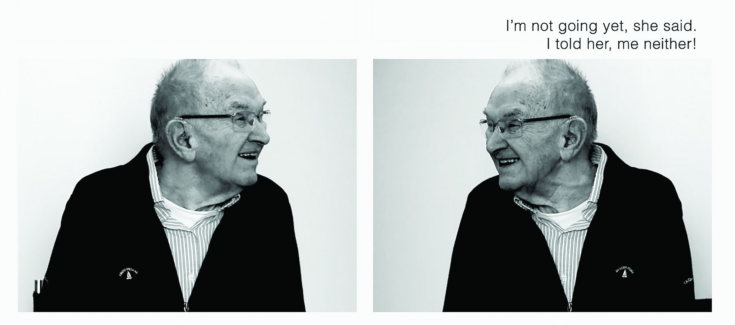
1.3. Socio-political context
We offer a track to learn how to relate to the socio-political context. You will explore how your practice can contribute to themes such as (but not limited to) climate transition and sustainability, decolonizations, anti-discrimination and intersectional solidarity, social justice, grassroots imaginations, collective practices and civic democracy. How can your work bring insight and transformation to these social urgencies?
You will develop a master project tailored to your experiences and interests. Intensive introductions to relevant and diverse professional contexts, practices and methodologies will support you in this (think of: socially engaged art, social design, participatory practices, artivism, speculative design, …) You collaborate with your fellow students to create a caring, participatory learning environment. You invest in a practice in which both methodology, process and output are developed as particular, valuable artistic forms and models.
Coaches: Robin Vanbesien, Annelys de Vet, Ann Laenen
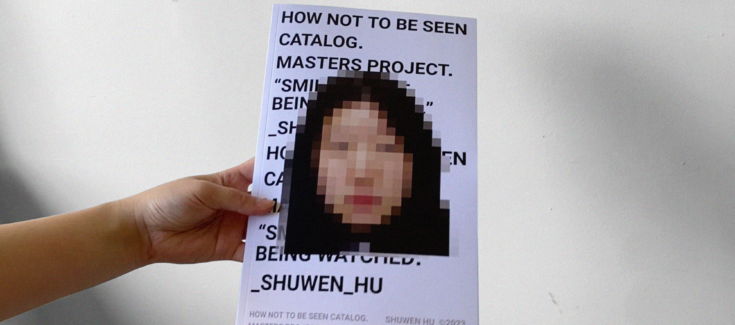
1.4. Technological context
By combining technology, design and art, we provide an incubator for innovative ideas and groundbreaking projects. We consider technology not only as a creative tool but as a completely different medium with its own guidelines for design and storytelling. It is a platform where you are given the space to realize a project in which your competencies, skills, artistic vision and technical abilities are demonstrated.
Through coaching, you will develop an intuition about what it means to create work using technology and digital media. In doing so, we strive to balance the technical, artistic and creative aspects of digital media. We guide work that ranges from the imminently practical to the whimsical, artistic and creative. We encourage you to develop your own form of expression through digital media.
In preparation for your master project, a number of technical workshops are organized at the beginning of the year. The aim is to learn the tools, technologies and methodologies needed to make work in the digital medium.
Coaches: Frederik De Bleser, Werner Van dermeersch
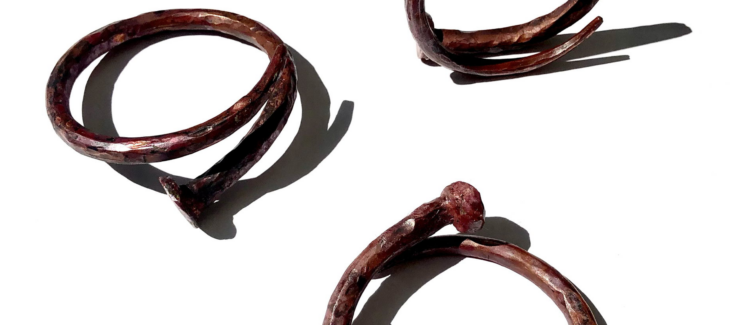
1.5. Jewellerycontext
This master context departs from a specific discipline: jewellery. Jewelleryis your artistic medium; a rich and layered world that is well suited to tell something about identity and body, about consumption and power. Mining raw materials, dealing with conflict materials and residual flows can be the subject of your master’s project but also more intimate themes such as memento, celebration, and loss.
You will develop a process-based approach, using research and experimentation as sources of inspiration. Analysis, reflection, a continuous improvement of practical skills and an engagement with the theoretical discourse within the field; together they contribute to your own research methodology. The approach is multidisciplinary. The outcome can be jewelry, but also photographs, videos, drawings, and publications. You know the cultural-societal context in which your jewelry or objects live. You will be coached to make personal choices within this context and to adopt an outspoken position.
An internship abroad is a crucial part of your master’s project. This internship takes place at an international institute, gallery, or museum, where you will be part of the team for several weeks. An excellent opportunity to gain insight into presenting work, in whatever form, and the business and organisational aspects involved. In addition, you will lay the foundations for an international network, essential for your further professional development.
Coaches: Hilde De Decker & guest teachers
1.B Masterclasses – 3 credits
8 master classes are organised. You can choose 1 master class. The programme is carefully composed based on current trends, but also on the needs detected in the master contexts. This can be different every academic year. You broaden your own artistic research with practical and theoretical elements, through “research creation practices”: namely, by researching, observing and creating together with researchers, designers and artists. At the end of the intensive week, there is a joint presentation. The presentation moment is a group event where each master class presents its research and process.

PART 2 : THEORY & REFLECTION – 21 credits
This part of the Master’s programme represents a total of 21 credits and consists of two elements, namely critical studies and an academic paper.
Critical studies -12 credits
Within critical studies, we offer four courses, of which you will choose two to achieve the required credits.
Critical aesthetic theories.
Critical aesthetic theories is a series of 8 theory classes during which we challenge the validity and appropriateness of our assumptions and beliefs within our present context. Classes are scheduled every three weeks throughout the academic year, supplemented by preparatory coursework.
Narrative strategies in art and design.
This series of 8 theory classes focus on the interpretation of narrative strategies in visual artwork and design. The aim is to understand the historical and contemporary context of the concept of narrativity. Classes are scheduled every three weeks throughout the academic year, supplemented by preparatory coursework.
Art & Design in the Anthropocene.
In this intensive theory week of 5 full days, we focus on the role of art and design within our present geological epoch in which the earth’s ecosystems and biodiversity are being slowly disrupted by human intervention.
Creative industries sociology.
In this intensive theory week of 5 full days, we focus on the creative sector as a burgeoning economy in many countries across the globe. We will learn how to evaluate, measure and understand its relationship to the wider economy and its impact on society.
Academic paper – 9 credits
During the entire academic year, you are regularly coached by the theory teachers in the development of your academic paper. In this paper, you focus on your own artistic choices by contextualizing them within a broader professional and theoretical framework.

PART 3 : PROFESSIONAL ATTITUDE – 9 credits
6 credits are represented by the third Master’s part. This section also consists of two parts, namely “self-organization and self-orientation” and “after graduation”.
Self-organization and self-orientation – 3 credits
Self-organization and self-orientation is a unique curriculum component for which you as a student are 100% responsible. The three credits can be spent entirely freely depending on what you have in mind to do after your studies. Are you planning to work in Russia and want to study Russian, then you can use those points for that. Do you already want to start your own business and want to follow an entrepreneurship course, perfect. At the end of the academic year, you have to justify your choice to your fellow students, who can then judge whether you have used these credits in a relevant way. With this initiative, we want to encourage every student to think further, beyond his or her master’s year.
After graduation – 3 credits
During the academic year, we organise “After Graduation”. You will get an overview of workshops, lectures, meetings and training sessions from which you can compile your own program.
Interested to learn how to prepare a financial plan, how to start a crowdfunding campaign or how to hold a successful pitch? Do you want to learn from the experience of others who have followed similar trajectories? How do you apply for a grant, or are you curious about how to develop and deploy a professional network?
You will learn this and much more in that week. You can use that knowledge immediately to connect the work you undertake in the Master’s program to the professional field preparing you to feel confident and informed of the professional challenges that you will be eagerly facing.
PART 4 – MASTERCLASSES
Master classes are specialised course units that aim to deepen students’ research skills
4.1 Masterclasses – 3 credits
8 master classes are organised. You can choose 1 master class. The programme is carefully composed based on current trends, but also on the needs detected in the master contexts. This can be different every academic year. You broaden your own artistic research with practical and theoretical elements, through “research creation practices”: namely, by researching, observing and creating together with researchers, designers and artists. At the end of the intensive week, there is a joint presentation. The presentation moment is a group event where each master class presents its research and process.

Admission requirements and registration
Would you like to enroll in the master’s program?
‘Sint Lucas Antwerpen, School of Arts’ is part of the ‘KdG University of Applied Sciences and Arts.’
On this page of the KdG-website, you find all admission requirements such as the tuition fee, study costs, scholarships registration and the application procedure.
Digital and live infosessions
Discover the digital information sessions and open days (between February and June) via this link.
Who teaches in the Master?
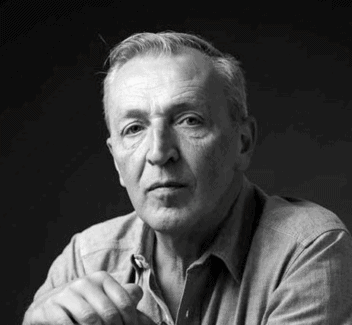
Michel Van Beirendonck
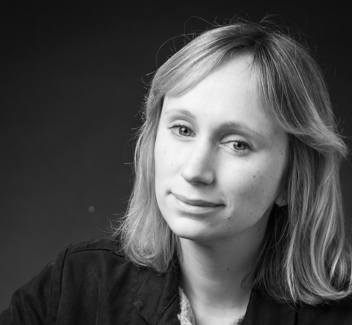
Saskia Van der Gucht
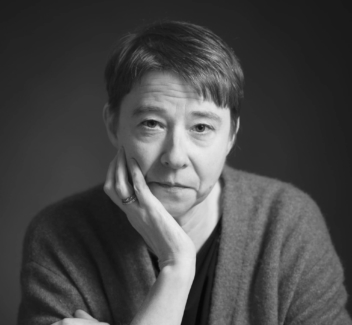
Hilde De Decker
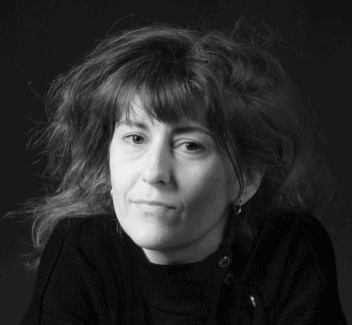
Helen Mauli
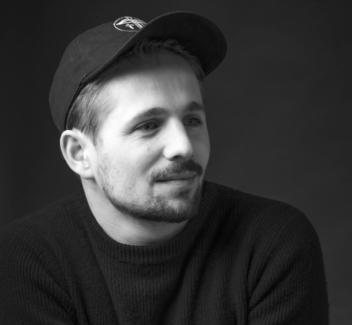
Sander Van de Vyver
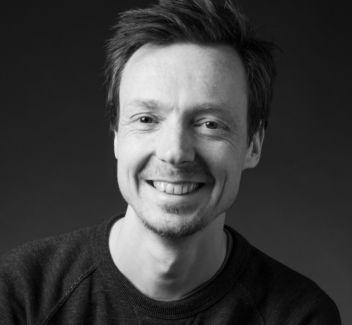
Frederik De Bleser
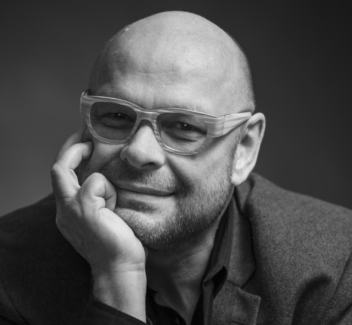
Kurt Vanbelleghem
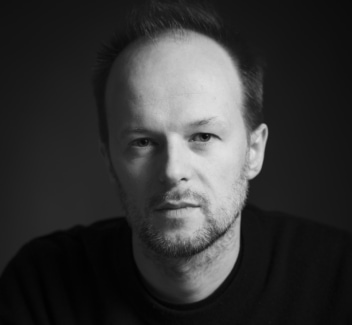
Robin Vanbesien
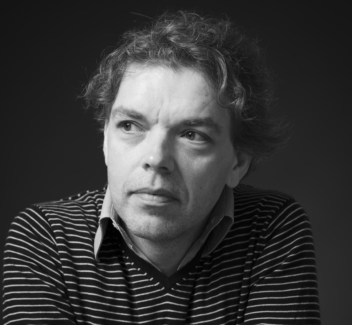
Reg Herygers
Head of academic masters and premasters
